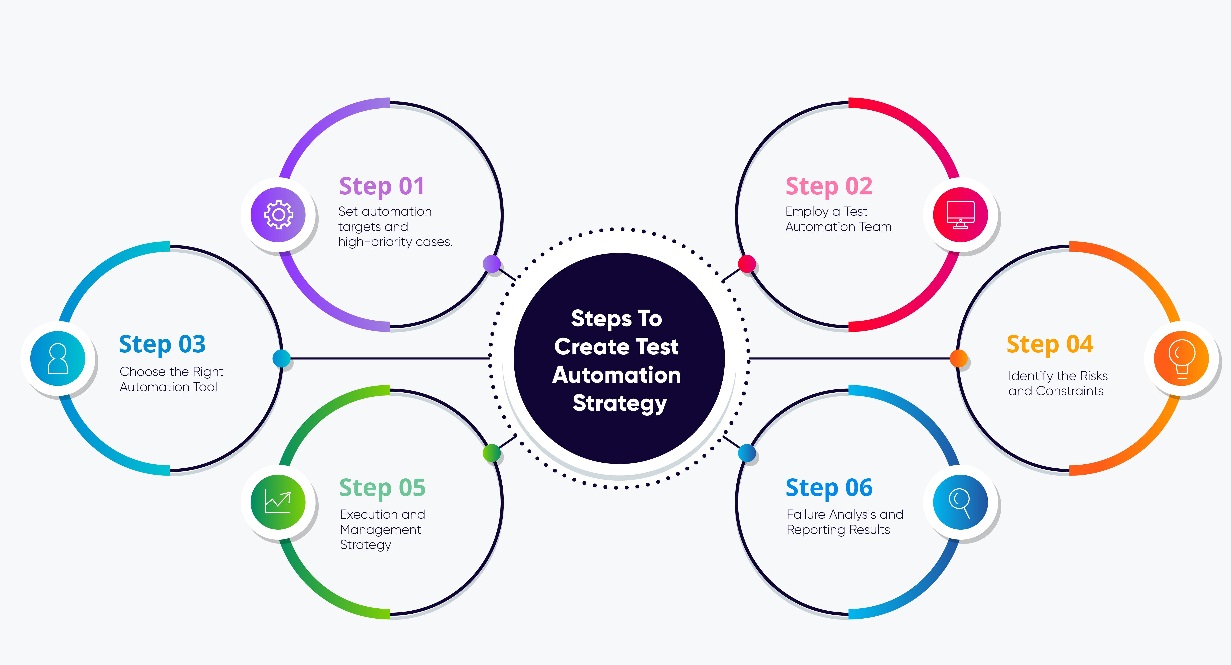Automated testing has made strides in ensuring software quality. It is now a crucial aspect of software maintenance. This holds true in agile environments as well. When developers work in such a setup, they can enhance their software release processes by emphasizing collaboration, iterative development, and adaptability to project changes.
By following the approach mentioned above, testers can effectively integrate testing throughout the development cycle. This integration allows for feedback and fosters a culture centered around high quality software releases.
In this article, we will look deep inside the effective strategies for implementing test automation in agile projects. Additionally, we will delve into principles of continuous testing, the significance of automation testing, and effective strategies for implementing tests successfully. Lastly, we will wrap up our discussion by examining tools and best practices associated with test automation.
Understanding Agile Testing
The main goal of agile testing is to align with the principles of agile development. This, in turn, means to focus on early and frequent testing for catching defects as soon as they are introduced within the application infrastructure. Compared to traditional testing methodologies, agile testing does not isolate the test cases to specific phases of the project life cycle.
Instead, agile testing is more focused on a continuous and iterative approach that helps support the fast-paced nature of modern agile projects. To further improve our knowledge about the scope of agile testing, let us go through some of the most important principles of this process:
- Agile testing provides immediate feedback on the quality and functionality of the product that the tests are currently working on.
- In this process, the testers have to perform the test cases at the earlier phases of the development cycle and also maintain them continuously throughout the application life cycle.
- With an agile methodology, the developers, business stakeholders, and testers can collaborate closely to ensure that the product meets the overall requirements of the company. It also helps to maintain that the final product aligns with the brand image to create a positive reputation for the app-developing company.
- With agile testing, the testers can adopt a test-driven development methodology. In this process, the testers have to write the test cases before the actual code to maintain the high-quality of their application.
- Agile testing also helps adopt acceptance test-driven development to define acceptance criteria before the development process. This adoption helps ensure the product meets the business expectations of the company.
Importance of Automation Testing in Agile
As we all know, manual testing is not only massively time consuming but also prone to various errors. It becomes even more evident when the developers are implementing manual testing in a fast paced environment of agile projects.
Using automation testing, the developers can easily address all the challenges raised by manual testing by enabling rapid execution of test cases. Automation testing also helps ensure the consistency of the test cycles by providing quick feedback. Let us improve our knowledge about the scope of automated test cases by focusing on some of its major benefits:
- Test automation can be easily executed much faster compared to manual test cases. It will accelerate the feedback loop and help wrap up the entire test cycle within just a few days.
- Using automation testing, the developers can access consistent results, which reduces the risk of errors that can arise due to human involvement.
- By using automation testing, the testers can free up their time from repetitive test instances and focus it on unique test areas like exploratory testing and ad hoc testing. This helps add more value to the overall test cycle.
- Finally, the automated test instances can be easily scaled to run on various environments and configurations. The developers can also adjust the test scripts according to the changing parameters and requirements of the app.
Strategies to Implement Continuous Test Automation
Let us now understand some other most important strategies that will help the modern tests to implement continuous test integration on agile projects:
● Define a Clear Test Automation Strategy
We advise the testers to create a transparent and easy-to-understand automation strategy. Here, the goal for the testers is to closely maintain the project goals. It will also help the testers to divert their attention towards factors like identifying the test cases that require automation, selecting the right automation tools, and setting up the entire automation infrastructure.
Let us shed more light over this segment by going through some of the most important considerations for setting up a clear test automation strategy:
The testers have to begin this process by determining the test cases which are the best candidates for automation testing. To analyze this segment, the testers must focus on repetitive and time consuming test cases that are critical for the application’s functioning.
Then, the testers have to choose the automation tools that will integrate properly with their development environment and will also support the technologies that are already implemented in the project.
Finally, it is important to set up a robust test environment which will mimic their production environment as closely as possible to ensure consistency in the release cycles.
● Integrate Automation testing with CI/CD Pipelines
Continuous integration and continuous deployment pipelines are very important parts of agile projects. This addition will enable automated building, testing, and deployment of code. So, by integrating this pipeline, the testers can ensure the tests run automatically whenever the code is committed. This will provide immediate feedback to the development team.
● Adapt a Test-Driven Development (TDD) Approach
Test-driven development is a modern development approach. Here, the test cases are written before the actual code implementation. By adopting this approach, testers can ensure the code meets the defined requirements and is also inherently testable.
While implementing test-driven development, the developers should remember to refactor the code to improve its structure. Although, you must ensure that code refactoring does not stop the test from passing the test cases.
● Implement Behavior-Driven Development (BDD)
On the other side, behavior-driven development builds upon test-driven development by crafting tests in a natural language. A key advantage of this approach is that it allows team members who’re not tech savvy to grasp the test scenarios easily. This ensures that all involved parties have an understanding of the project requirements and acceptance criteria.
● Using Existing Frameworks and Libraries
Testers can make use of established test automation frameworks and libraries to streamline the setup and maintenance of the testing environment, saving time and effort significantly. Some popular frameworks for test automation are Selenium, Appium, and JUnit.
● Parallel Testing and Test Distribution
Finally, the testers can run the automation test cases in a parallel configuration to massively reduce the time required for the test execution process. By distributing the test instances across multiple machines or containers, the testers can ensure that tests are executed efficiently.
Test sharding is an efficient approach to test automation where the developers have to split the test cases into smaller chunks and run them on different machines. The proper implementation of this process can execute thousands of test cases at the same time.
Tools and Technologies for Continuous Test Automation
The testers must realize that it is very important to choose the right tools and technologies for the successful implementation of continuous test automation. To shed more light on this segment, we have mentioned some of the most important inclusions on this list:
● Cloud Testing Tools
LambdaTest is a cloud-based AI-powered test orchestration and execution platform that allows users to test their web applications and websites across various browsers, operating systems, and devices. It provides a scalable infrastructure for both manual and automated cross browser testing, enabling developers and testers to ensure compatibility and functionality across different environments.
● Test Automation Tools
The right automation tool will form the spine of a stable automation testing environment. We can look at Selenium, which is the most widely used option for executing automation testing on web apps. On the other hand, Appium is the unanimous choice for executing automation testing on various forms of mobile applications.
There are also various new yet increasingly popular options like Cypress, Playwright, and JMeter.
● CI/CD Tools
CI/CD tools represents continuous integration and continuous deployment tools. These tools will help you to ensure the proper integration between various phases of your application development cycle. We can consider Jenkins as our example. It is a popular open-source automation server which supports building, testing, and deploying modern application code.
You can also use CircleCI for implementing continuous integration which will automate the entire software development process.
● Version Control Tools
You can use Git to implement version control in your test environment. It is a distributed version control system that is most commonly used for managing the source code and also the automation test scripts.
Best Practices for Continuous Test Automation
Now let us go through some of the best practices which can help further streamline the continuous test automation processes while improving the overall quality of the release cycles:
- We highly recommend the testers to begin with a small and manageable set of test cases. After this, the testers can gradually expand the test suite as they gain more experience and confidence in the entire process.
- It is important for the testers to prioritize test automation efforts based on the risks and impact on the overall application functionality. For instance, areas that have critical and high-risk factors should be automated first for ensuring maximum test coverage.
- It is very important for the testers to properly manage the test data and implement reliable automation testing. In this regard, testers can use techniques like data masking, data generation, and data versioning.
- The testers can implement a continuous feedback loop by integrating test automation with CI/CD pipelines. This integration will ensure the test results are communicated to the team promptly for ensuring quick resolution of crucial bugs and errors.
The Final Verdict
Based on all the factors that we analyzed in this article, we can easily conclude that implementing continuous test automation in agile projects is very important for maintaining high quality deliverables and also uplifting the pace with rapid development cycles. By adopting all the strategies and best practices that we discussed in this article, the teams can achieve seamless integration of test automation.
This integration will, in turn, help ensure quick feedback, consistent quality, and efficient testing processes. Finally, by following all the advanced strategies, the agile teams can build robust and reliable automated test suites which will support the dynamic nature of agile projects. This is one of the most important factors for driving continuous improvement in software quality.
Read More: EGERP Panipat: Transform Businesses With Innovative Strategies



